SR&ED Tax Credits upheld by Tax Court Of Canada in Canafric Inc. v. The King
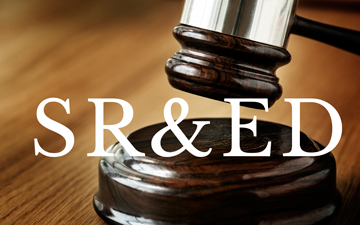
Developing new recipes qualifies for Scientific Research and Experimental Development credits, explains David J Rotfleisch, when you make frozen pies
Introduction
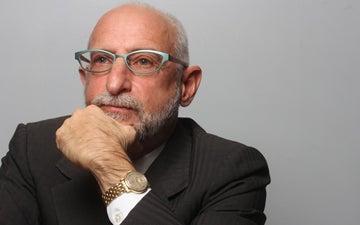 |
David J Rotfleisch, CPA, JD is the founding tax lawyer of Taxpage.com and Rotfleisch & Samulovitch P.C., a Toronto-based boutique tax law corporate law firm. |
The rules regarding Scientific Research and Experimental Development ("SRED" or "SR&ED") claims are set out in various parts of the tax act. Section 37 allows for the deduction of SR&ED expenditures while section 127 allows for taxpayers to claim Investment Tax Credits ("ITCs") for SR&ED. Through amendments in 1944 to the Income War Tax Act, predecessor of the Income Tax Act ("tax act"), Canadian corporations have been allowed to deduct research and development expenditures against revenue. This remains in the tax act today in the form of SR&ED claims, and associated ITCs. These special tax incentives are meant to promote scientific research in Canada by allowing expenditures used for research and development, which are prohibited by the deduction rules in section 18 of the tax act.
In Canafric Inc. v. The King, several claims made by Canafric Inc. ("Canafric") for SR&ED and ITCs were disputed by the Canada Revenue Agency ("CRA").
Canafric's frozen pie development
Canafric, the taxpayer and appellant in this case, specializes in developing new frozen pies recipes for which the company claimed SR&ED expenditures and ITCs. This company's food manufacturing business produces custom pies for food retailers, such as Costco, Loblaws, and Mortimer. These pies would undergo testing of their recipes which would change to meet the demands of their clients. Canafric believed their development process qualified for SR&ED expenditures and accompanying ITCs. The CRA has disagreed with Canafric on several projects between 2013 to 2016, which is the central issue in this case.
Timeline of the SR&ED Case
This 2023 decision from the Tax Court of Canada (involved seven of Canafric projects that the CRA denied. Some of the projects spanned multiple years and were denied multiple times. In the 2013 tax year, Canafric was denied two of the five projects claimed, which totalled $90,682 expenditures and $22,183 in ITCs. In the 2014 tax year, all three projects that were claimed were disallowed with an undisclosed amount of expenditures and ITCs.
Of the seven projects claimed in the 2015 tax year, three were disallowed, totalling $97,895 expenditures and $15,476 in ITCs. Lastly, in 2016, six projects were claimed with three being denied for a total of $154,872 in expenditures and ITCs totalling $23,304. Thus, without including the three projects in 2014, the denied expenditures totaled $343,449 and ITCs of $60,963.
The Tax Court ruled in favour of the appellant taxpayer. The Tax Court found that the evidence provided by Mr. Pandya, the representative and CEO of Canafric, satisfied the criteria for the projects to qualify for SR&ED claims, thus allowing the expenditures and associated ITCs.
Qualifying for SR&ED and ITCs for experimental development
The rules regarding research and development claims are set out in section 37 that allows for the deduction of qualifying expenditures and section 127 allows a claim for investment tax credits for SR&ED. Technical rules for calculating and claiming SR&ED are set out in section 37, as well as part XXIX of the tax act's regulations. The key section for determining if a project qualifies for SR&ED, and the focus of this case, is section 248 which sets out different definitions used in the tax act.
Section 248 defines SR&ED and sets out the criteria for claims, which has been elaborated through case law. Under this section SR&ED "means systematic investigation or search that is carried out in a field of science or technology by means of experiment or analysis" that falls within one of three categories; (a) basic research, (b) applied research, or (c) experimental development.
Paragraph (d) of the definition sets out that SR&ED includes "work undertaken by or on behalf of the taxpayer with respect to engineering, design, operations research, mathematical analysis, computer programming, data collection, testing or psychological research, where the work is commensurate with the needs, and directly in support, of work described in paragraph (a), (b), or (c) that is undertaken in Canada by or on behalf of the taxpayer," whereas subsections (e) through (k) excludes work with respect to certain activities, such as marketing and quality control.
This case was concerned with meeting the requirements of experimental development. To qualify as experimental development under section 248(1)(c), taxpayers must meet five criterions established in the Tax Court case Northwest Hydraulic Consultants Ltd. v The Queen. These five criterions were summarized later in the Federal Court of Appeal case of CW Agencies Inc. c Canada as five questions:
- Was there a technological risk or uncertainty, which could not be removed by routine engineering or standard procedures?
- Did the person claiming to be doing SRED formulate hypotheses specifically aimed at reducing or eliminating that technological uncertainty?
- Did the procedure adopted accord with the total discipline of the scientific method including the formulation testing and modification of hypotheses?
- Did the process result in a technological advancement?
- Was a detailed record of the hypotheses tested, and results kept as the work progressed?
How did Canafric meet the criteria?
Questions 1 and 4: Was there a technological risk or uncertainty and did the process result in a technological advancement?
These two questions were addressed together by the Tax Court as they form the "why requirement" of the overall test. The "why requirement" addresses the requirement of technological uncertainty. First by asking through question 1 if there was technological risk or uncertainty then asking through question 4 whether there was technological advancement.
Question 1 assesses if there is a technological risk or uncertainty. In doing so, the court examines whether there was a technological advancement required when there is uncertainty whether a goal can be achieved due to limited scientific knowledge. The claimant must prove that routine methods cannot resolve this uncertainty. Importantly, the lack of knowledge must truly be absent from established scientific understanding, not just unknown to the claimant.
Question 4 focuses on the advancement. This criterion does not demand the claimant to prove successful results; even an unsuccessful project aimed at technological advancement can qualify. To meet this criterion, the project must lead to a technological or general understanding advancement, recognizable to experts in the field. This can even involve the rejection of a hypothesis.
Mr. Pandya set out how each project that the CRA denied met the criteria of uncertainty and advancement. The 2013 SR&ED Claim involved two projects that had been discussed extensively in a meeting with the CRA. Canafric established that these projects aimed to meet specific customer targets like longer shelf life, reduced salt and fat, higher protein, and product integrity after freezing.
The 2014 SR&ED Claim featured three projects with requirements like salt reduction, using real potatoes, antibiotic-free meat, and shorter cooking times. The 2015-2016 SR&ED Claim involved seven projects, and had challenges that included thicker fillings, compatible pie crusts, lower fat/salt, 21-day shelf life without preservatives, and halal products.
The court concluded that six of the projects presented technological uncertainties beyond routine methods. Each project consisted of a new or improved product with no information available on how to achieve the goals that were set by clients. Canafric was unable to achieve all targets, but the recipes that failed allowed Canafric to eliminate certain recipes, which the Tax Court found constituted a technological advancement.
Questions 2 and 3: were hypotheses formulated specifically aimed at reducing or eliminating that technological uncertainty; and did the procedure adopted accord with the scientific method?
Questions 2 and 3 were also addressed together by the Tax Court as the "how requirement" of the test. These two questions relate to the preamble of the definition of SR&ED in section 248, which states that the "work must be a systematic investigation or search that is carried out in a field of science or technology by means of an experiment or analysis." These questions are meant to ensure the work is undertaken for the purposes in subsection 248(1). Thus, question 2 requires, as interpreted by the Tax Court in Joel Theatrical Rigging Contractors (1980) Ltd. v The Queen, a hypothesis which "is a statement to be tested by an experiment or a trial." Question 3 requires procedures that follow a systemic approach to be adopted, which, as clarified in Joel Theatrical, would be characterized by trained and systematic observation, measurement and experiment, and the formulation, testing and modification of hypotheses.
Canafric was able to meet both question 2 and 3. Mr. Pandya outlined Canafric's development process, involving client-requested product features, recipe formulation, testing, and taste panel evaluation. The Tax Court found that this process fulfilled the second criterion, as Canafric designed hypotheses to achieve the goals set out by client requests. Regarding the third criterion, the CRA believed Canafric used a "trial and error" method without analyzing failed recipes. The Tax Court disagreed with this characterization by the CRA and found that Canafric did not just dismiss unsuccessful recipes. Instead, Canafric would analyze why a recipe did not meet client requirements and adjusted the recipe accordingly. This reflected a more structured approach than the CRA's perspective.
Question 5: Was a detailed record of the hypotheses tested, and results kept as the work progressed?
Question 5, as explained in the Federal Court of Appeal case of RIS-Christie Ltd v The Queen, requires that "evidence of scientific research must be adduced by the taxpayer in order to demonstrate that such research (including testing) was undertaken." This may be met through documentary evidence, but documentary evidence is not necessary. The Federal Court of Appeal highlighted, however, that providing documentary evidence would be advantageous to the taxpayer. Without documentary evidence a plausible explanation from the taxpayer may be necessary for why there is an absence of documentation.
In Canafric's case, this documentation requirement caused disagreement with the CRA. Canafric had provided both documentary and testimonial evidence. In 2015, there was an on-site meeting between Mr. Pandya and CRA representatives in discussed Canafric's projects in their 2013 SR&ED claim in detail. During this meeting technical information was orally explained to the representatives with supporting documents being provided later. The 2014 claim lacked such a meeting, but documents of the projects' development process were submitted during the appeal stage.
A meeting for two of the projects in Canafric's 2015 and 2016 SR&ED claims happened in 2018. Again, information was conveyed orally and later supported by documentation. The CRA contested that the oral evidence provided by Mr. Pandya did not satisfy the requirements. The Tax Court, however, found that Canafric had indeed met the requirements of question 5 through the meetings and documents it had provided to the CRA. The Tax Court reiterated that documentary evidence is not always necessary, and that the testimony given by Mr. Pandya had filled in any of the gaps in the documentary evidence.
Canafric highlights the importance of having a properly prepared argument for Tax Court. Mr. Pandya was praised by the Tax Court for his impressive delivery and factually based arguments. This was contrasted against the CRA's "failure to address" the appellant's evidence. This case did, however, have many factors in favour of the taxpayer such as a well-documented process and clearly followed scientific procedures in testing out hypotheses.
David J Rotfleisch, CPA, JD is the founding tax lawyer of Taxpage.com and Rotfleisch & Samulovitch P.C., a Toronto-based boutique tax law corporate law firm and is a Certified Specialist in Taxation Law who has completed the CICA in-depth tax planning course. He appears regularly in print, radio and TV and blogs extensively.
With over 30 years of experience as both a lawyer and chartered professional accountant, he has helped start-up businesses, cryptocurrency traders, resident and non-resident business owners and corporations with their tax planning, with will and estate planning, voluntary disclosures and tax dispute resolution including tax audit representation and tax litigation. Visit www.Taxpage.com and email David at david@taxpage.com.
Read the original article in full on TaxLaw Canada. Author photo courtesy Rotfleisch & Samulovitch P.C.







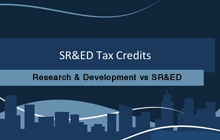
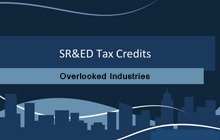
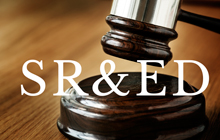
(0) Comments